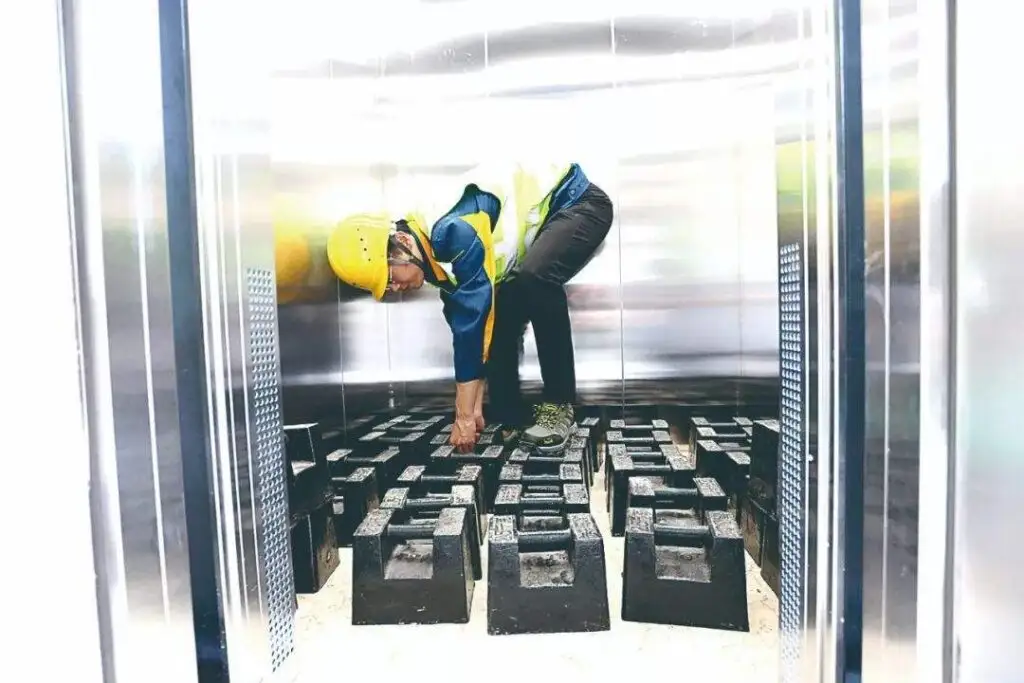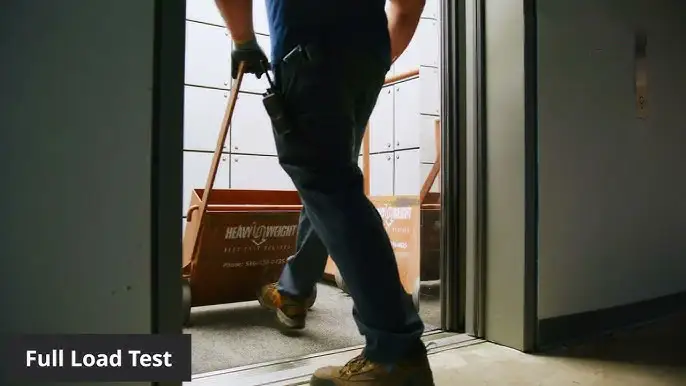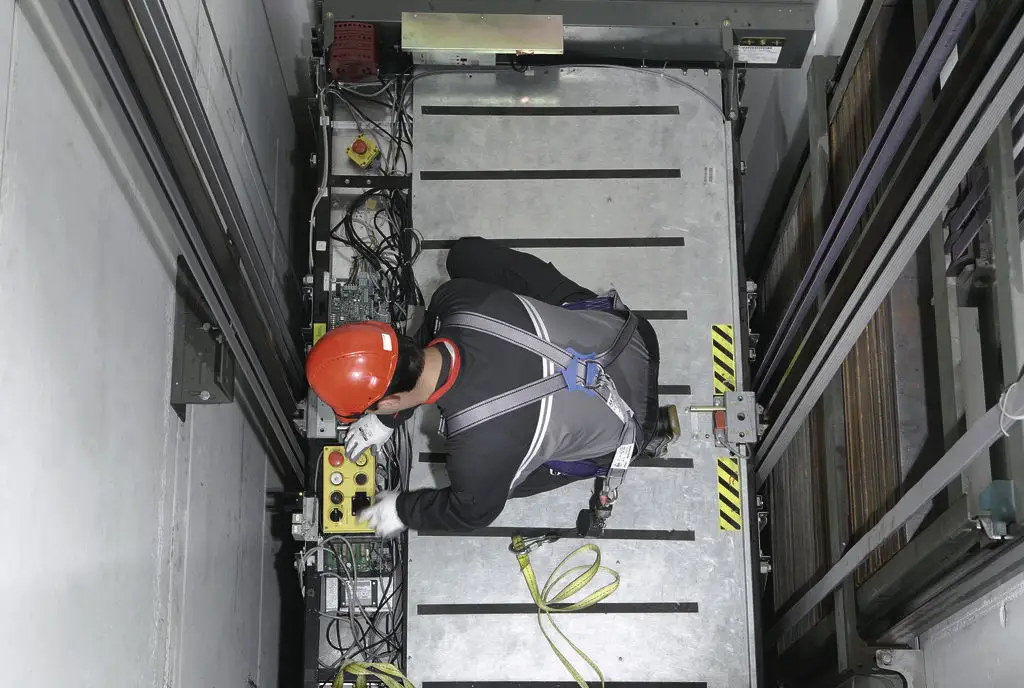Therefore, striking the right balance between safety margins and overall operational efficiency is crucial for the machine to be fully functional and quick. This is where elevator load tests come in.
Elevators load tests are a depiction of real-world scenarios where the elevator is filled beyond its maximum weight limit to ensure it works perfectly, even during peak hours. Basically, the machine is tested beyond its normal limits so that if anything goes haywire, the engineers can catch it early and prevent the mishap.
So, let’s get straight into it and see why these tests are pivotal to safety and how they work!
What is an Elevator Load Test, and Why Is It Important?
A load test for elevators is an evaluation process meant to assess their capacity, safety, and performance in weight and usage scenarios.
It involves putting elevators through situations, such as carrying the number of passengers transporting heavy objects and handling emergencies. This ensures that elevators function optimally while adhering to safety standards.
During a load test, elevators are subjected to weights that exceed their rated capacity to evaluate their integrity and ability to handle stress. For example, an elevator designed for a 1,000 kg capacity may be tested with loads up to 1,250 kg.
These tests provide insights into the elevator’s performance under weights and the effectiveness of emergency systems like brakes and alarms. Importantly, international and national standards mandate elevator load tests.
These standards exist to ensure passenger and goods safety while ensuring compliance with industry regulations regarding elevators. Elevator load testing plays a role in preventing accidents or breakdowns by assuring us that elevators can meet the demands of modern buildings reliably.
It serves as a bridge between design concepts and real-world functionality, ultimately contributing to the secure vertical transportation we rely on every day.

Elevator Load Test Requirements
Meeting the requirements for elevator load tests is crucial to ensure the safety, reliability, and compliance of elevators with industry standards.
These strict criteria are necessary to ensure elevators can handle situations while prioritizing passenger security.
Key aspects of elevator load test requirements include:
● Load Capacity
● Speed
● Safety mechanisms
Load tests usually involve putting elevators under loads rather than their rated capacity to see how well they handle stress without compromising their structural integrity. These tests closely examine how elevators respond to weights and their ability to stop safely in emergencies.
During load tests, the focus is on assessing the elevator’s performance regarding speed variations, such as acceleration and deceleration. This ensures that passengers experience controlled rides, avoiding any discomfort or potential hazards.
The safety mechanisms of elevators are also thoroughly evaluated during load tests. This includes checking the braking systems, emergency stops, and alarms to ensure they respond promptly and effectively when subjected to loads or simulated emergency scenarios.

How Do You Perform an Elevator Load Test?
So, how do you actually perform an elevator load test? Here are the steps involved:
● Preparation: Install calibrated test weights inside the elevator car that exceed its rated capacity.
● Setup: Secure the elevator doors to prevent anyone from entering during the test. Disable normal operation mode.
● Testing: Descend with the elevator while varying speeds and stopping at floors. Monitor its response to stress levels. Assess the effectiveness of its braking systems.
● Perform Emergency Tests: Run simulations of emergency scenarios such as power outages or abrupt halts to verify the effectiveness of safety measures.
● Collect Data: Gather information on the performance of elevators, including acceleration, deceleration, and response times.
● Conduct Analysis: Assess how the elevator behaves during these tests by comparing its performance, against established standards and anticipated results.

How Often Should an Elevator Load Test Be Performed?
Regular maintenance checks are essential to guarantee the safety and adherence of elevators. Industry standards recommend conducting load tests during installation, significant modifications, or extensive repairs.
The frequency of repeat load tests can differ depending on factors, including elevator type, capacity, usage patterns, and local regulations.
By performing load tests, we can ensure elevators can handle situations while upholding safety standards. This guarantees the reliability and safety of elevators for passengers and goods as they adapt to changing demands over time.
● For elevators that are used frequently, like those in buildings or smaller offices, it may be recommended to conduct a load test every 5 to 7 years. These elevators experience levels of wear and tear, making frequent testing necessary.
● Elevators in buildings, hotels, or sized office complexes with moderate traffic might benefit from load tests every 3 to 5 years. This interval helps ensure that the elevators remain reliable and safe for the people using them.
It is advisable to conduct frequent load tests in locations with heavy elevator traffic, such as office towers, shopping centers, or transportation hubs. Under usage conditions, elevators might undergo load testing every 1 to 3 years to guarantee their safety and performance.
What is a 5-Year Load Test On an Elevator?
A 5-year load test on an elevators is an evaluation that takes place every five years to assess its performance, safety measures, and adherence to industry standards. During this test, the elevator is subjected to loads exceeding its capacity, simulating usage scenarios and emergencies.
The main goal is to verify the elevator’s strength, braking systems, and emergency protocols.
Conducting this test at intervals ensures that the elevator can safely transport passengers and goods while adapting to changing demands. It plays a role in elevator maintenance by preventing malfunctions, ensuring user safety, and maintaining efficiency.

The Takeaway
As technology evolves with driven sensors and predictive algorithms, load testing confidently moves forward into the future.
These tests do not ensure compliance. Also, inspire innovation by driving advancements in design and technology. As cities grow taller and buildings reach heights, elevators are guardians of progress.
With each load test they undergo, elevators demonstrate their commitment to transporting us through marvels and aspirations for limitless vertical mobility in the future.
